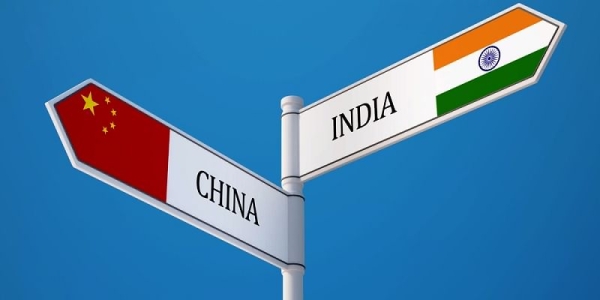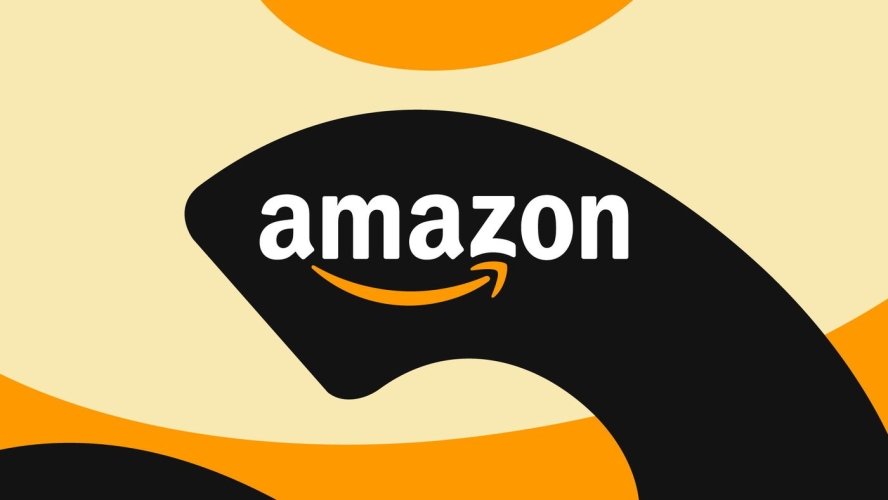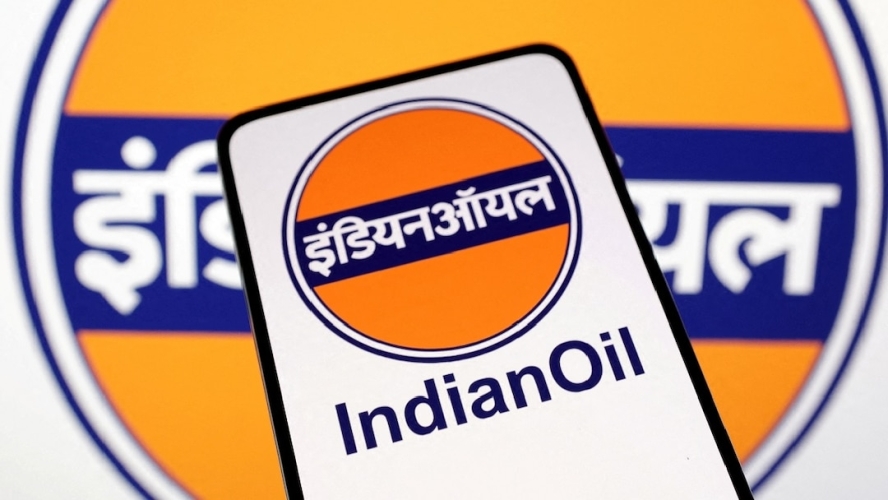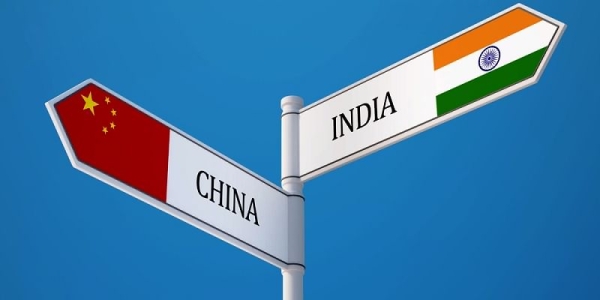Stock Radar: Safe stock! Support-based buying pushes L&T towards January 2024 highs: Short-term traders can look to buy the stock now for a possible bounce back towards 3,700 levels in the next 1-2 weeks, suggested experts. The construction stock hit a record high of Rs 3,738 on 30th January 2024, but failed to hold on to the momentum. It did witness a mild consolidation but found support above 3,200 levels. The stock witnessed a bounce back after consolidating in the January-February 2024 period. On the monthly charts, it has been in an uptrend since July 2022. Larsen & Toubro (L&T), a part of the construction industry, remained rangebound in the short term but has managed to bounce back from lows and is now approaching January 2024 highs. The S&P BSE Sensex stock has shown resilience despite the volatility seen in the benchmark indices. The S&P BSE Sensex rose over 1% compared to over 8% rise seen in the L&T stock price in the same period. Short-term traders can look to buy the stock now for a possible bounce back towards 3,700 levels in the next 1-2 weeks, suggested experts. The construction stock hit a record high of Rs 3,738 on 30th January 2024, but failed to hold on to the momentum. It did witness a mild consolidation but found support above 3.200 levels. "L&T stock has outperformed from the last four years and strong support-based buying has been seen on a month-on-month basis," said Shivangi Sarda, analyst, derivatives and technical research, Motilal Oswal Financial Services Ltd. source: et
क्या ऊंची ब्याज दरें भारत को चीन की दोहरे अंक की वृद्धि दर दोहराने से रोक रही हैं? अनुमान लगाया गया था कि जीएसटी रोलआउट और डिजिटलीकरण जैसे सुधारों से सकल घरेलू उत्पाद में 2% का इजाफा होगा। लेकिन ऐसा नहीं हुआ है. क्षमता उपयोग का स्तर 75% से नीचे है, जबकि निजी उपभोग वृद्धि सबसे धीमी रही है। विशेषज्ञों का मानना है कि ब्याज दरें कम करने से मदद मिल सकती है। क्या भारत अपने वज़न से नीचे मुक्का मार रहा है? 2014-15 के आर्थिक सर्वेक्षण में, तत्कालीन मुख्य आर्थिक सलाहकार अरविंद सुब्रमण्यन ने लिखा था, "तथ्य और भाग्य भारत के पक्ष में हैं" ताकि देश को दो अंकों की मध्यम अवधि के विकास पथ पर आगे बढ़ाया जा सके। सुब्रमण्यम ने तर्क दिया कि भारत एक अच्छी स्थिति में है, जो राष्ट्रों के इतिहास में दुर्लभ है, जिसमें स्थिर बाहरी वातावरण के साथ ऐतिहासिक राजनीतिक जनादेश से निरंतर सुधार को बढ़ावा मिलेगा। भारत जैसी बड़ी उद्यमशील अर्थव्यवस्था के लिए चीन के बहु-दशकों के दोहरे अंकों के विकास के पथ का अनुसरण करना स्वाभाविक माना गया। वस्तु एवं सेवा कर (जीएसटी) जैसे सुधार, एक बार स्थिर हो जाने पर, सकल घरेलू उत्पाद (सकल घरेलू उत्पाद) की वृद्धि में लगभग 2% अतिरिक्त जोड़ने का अनुमान लगाया गया था, वित्तीय क्षेत्र का डिजिटलीकरण सोने पर सुहागा था। जबकि भारत के विकास के लिए सब कुछ संरेखित है, तथ्य यह है कि भारतीय अर्थव्यवस्था की मांग के अनुरूप उपभोग नहीं कर रहे हैं। कुछ का मानना है कि यह उच्च ब्याज दरें हैं, अन्य उच्च जीएसटी की ओर इशारा करते हैं, जबकि कुछ का कहना है कि चीजें खरीदने के लिए पर्याप्त नौकरियां नहीं हैं। पिछले 10 वर्षों से निजी खपत स्थिर है। यहां तक कि कॉरपोरेट भी क्षमता निर्माण नहीं कर रहे हैं। हालाँकि, कम क्षमताओं पर, उनकी बिक्री में उच्च वृद्धि देखी गई है - विशेष रूप से हाई-एंड कारों, एयर कंडीशनर और रियल एस्टेट में। लेकिन यह मांग शीर्ष 5 करोड़ लोगों तक ही सीमित है। विकास के सभी पहलुओं के पक्ष में होने के बावजूद, भारत अपनी सर्वोत्तम संभव दर से विकास नहीं कर रहा है। लेकिन उम्मीदें बहुत ज्यादा हैं. वास्तव में, बड़े कॉर्पोरेट्स 2019 में 1.69x की तुलना में 2023 के लिए उच्च परिसंपत्ति कारोबार अनुपात 2.17x के करीब देख रहे हैं। यह अतिरिक्त क्षमताओं को जोड़ने के लिए कॉर्पोरेट्स की मांग में सुधार की तरह दिखता है, लेकिन हमें इंतजार करने और देखने की जरूरत है। सभी तीर भारत में उच्च ब्याज दर की ओर इशारा करते हैं जो विकास में बाधा बन रही है। ऐसे नीति विशेषज्ञ हैं जो मानते हैं कि इसे 6% से घटाकर 4% पर लाया जा सकता है, जिससे मांग में तेजी आएगी। ताजा अनुमान के अनुसार भारत सबसे तेजी से बढ़ने वाली बड़ी अर्थव्यवस्था है, 2023-24 में विकास दर 7.6% आंकी गई है। मूडीज़ सहित कई एजेंसियों ने देश के लिए अपने विकास पूर्वानुमान बढ़ा दिए हैं। लेकिन प्रमुख प्रश्न बने हुए हैं - क्या भारत अपने वजन से कम पर मुक्का मार रहा है? क्या हमने खुद को यह सोच कर सीमित कर लिया है कि 7% संभावित वृद्धि है? सच है, दुनिया ने महामारी के बाद कई व्यवधान देखे हैं। अमेरिकी फेड द्वारा 2022 से शुरू होने वाली मौद्रिक सख्ती की सबसे तेज गति से विश्व अर्थव्यवस्था को मंदी में धकेलने का अनुमान लगाया गया था। लेकिन मंदी की आशंकाएं दूर हो गई हैं, क्योंकि अमेरिकी अर्थव्यवस्था उच्च ऊंचाई पर बढ़ रही है और अंतर्राष्ट्रीय मुद्रा कोष ने 2024 में 3.1% और 2025 में 3.2% की वैश्विक वृद्धि का अनुमान लगाया है। यूके और जापान - जी-7 में से दो देश - हाल ही में मंदी में फिसल गए हैं, लेकिन विश्व सकल घरेलू उत्पाद में उनकी संयुक्त हिस्सेदारी 5% से कम है।g source:et
ज्वैलर्स को मिल सकता है 6% की बढ़त का समर्थन; पेंट कंपनी को 5% का फायदा होने की संभावना: निफ्टी सकारात्मक रुख के साथ खुला लेकिन बिकवाली के दबाव में गिर गया और नुकसान के साथ बंद हुआ। पिछले कुछ दिनों तक एक सीमित दायरे में मजबूत होने के बाद, बाजार अंततः मजबूत बिकवाली दबाव के आगे झुक गया। निफ्टी सकारात्मक रुख के साथ खुला लेकिन सत्र के शुरुआती मिनटों में यह अपने दिन का उच्चतम बिंदु बन गया। यह जल्द ही नकारात्मक क्षेत्र में चला गया। कुछ देर एक दायरे में कारोबार करने के बाद बाजार में बिकवाली का दबाव तेज होता देखा गया। निफ्टी अपने उच्चतम बिंदु से लगभग 550 अंक नीचे आ गया। मामूली सुधार के बाद, हेडलाइन इंडेक्स 338 अंक (-1.51%) की शुद्ध हानि के साथ बंद हुआ। कल्याणन्जिल में जोरदार ब्रेकआउट देखने को मिला जब यह रु. से ऊपर चला गया। पिछले साल जून में 118. इसके बाद जो तेजी का रुझान आया, उसमें ऊंचे शीर्ष और ऊंचे तल का निर्माण करते हुए स्टॉक में तेजी देखी गई। सभी आंतरायिक रिट्रेसमेंट में स्टॉक को 50-डीएमए पर समर्थन मिला, जो वर्तमान में रुपये पर रखा गया है। 372. हाल ही में, स्टॉक ने काफी लचीलापन दिखाया है क्योंकि यह अपने 100-डीएमए से बढ़कर अपने 50-डीएमए स्तर से काफी ऊपर बंद हुआ है। हाल के निचले स्तर को 100-डीएमए के पास भी समर्थन मिला है जो कई महीनों से ऊपर की ओर बढ़ती समर्थन प्रवृत्ति रेखा के साथ मेल खाता है। आरएसआई तटस्थ रहता है और कीमत के मुकाबले कोई विचलन नहीं दिखाता है। जबकि ओबीवी अपने उच्च स्तर के आसपास मंडराता है, स्टॉक आरआरजी के अग्रणी चतुर्थांश के अंदर स्थिर रहता है जिससे व्यापक बाजारों के मुकाबले स्टॉक के सापेक्ष बेहतर प्रदर्शन हो सकता है। एक तकनीकी पलटाव या तेजी जारी रहने से स्टॉक में रु. का परीक्षण हो सकता है। आने वाले दिनों में 415 का स्तर। रुपये के नीचे बंद हुआ। 370 इस व्यापार में स्टॉप-लॉस का कारण बनेगा। लार्जकैप आरएसआई पर सकारात्मक विचलन के संकेत दिखाता है। यह लार्जकैप पेंट स्टॉक आरएसआई पर सकारात्मक विचलन के संकेत दिखा रहा है जो बताता है कि स्टॉक ने अपने लिए एक आधार तैयार कर लिया है। बाद के रिबाउंड से लगभग 5% की संभावित वृद्धि हो सकती है। इस प्रकार, मौजूदा स्तर अनुकूल जोखिम-इनाम अनुपात के साथ खरीदारी को आकर्षक बनाता है। खरीदें अनुशंसा: एशियन पेंट्स लिमिटेड रेंज खरीदें अपेक्षित लक्ष्य रु. 2850-2853 रु. 2995 झड़ने बंद उल्टा अपेक्षित Ως. 2830 ~55% ईटी योगदानकर्ता 4. लिटिल सेंट मुश्किल ले पर गिरना चोटी। डब्ल्यू रुपये के करीब टॉप बनाने के बाद. पिछले साल दिसंबर में 3422 के स्तर पर एशियन पेंट्स लिमिटेड (एशियानपेंट) के शेयर मूल्य में धीरे-धीरे गिरावट देखी गई। यह गिरावट रुपये के करीब रुकी। पिछले महीने 2780 के स्तर पर और एक पलटाव देखा गया। source: et
बड़े डार्क स्टोर, उत्पाद रिटर्न: कैसे त्वरित-वाणिज्य स्टार्टअप अमेज़ॅन, फ्लिपकार्ट के मैदान पर नजर रख रहे हैं: त्वरित संतुष्टि के युग में अधिक से अधिक शहरी भारतीय उत्पाद श्रेणियों में त्वरित डिलीवरी का विकल्प चुन रहे हैं, 10 मिनट की दौड़ के नेता किराने के सामान से परे अपने पंख फैलाने की कोशिश कर रहे हैं। कुछ साल पहले तक, किसने सोचा होगा कि लोगों को सौंदर्य उत्पाद या परिधान 10 मिनट के भीतर उनके दरवाजे पर पहुंचा दिए जाएंगे? हाल के महीनों में, त्वरित-डिलीवरी स्टार्टअप ब्लिंकिट, ज़ेप्टो और स्विगी इंस्टामार्ट ने उन उत्पादों को शामिल करने के लिए अपनी श्रेणियों का विस्तार किया है जिन्हें कोई आमतौर पर अमेज़ॅन और फ्लिपकार्ट जैसे ई-कॉमर्स प्लेटफार्मों से खरीदता है। अधिक से अधिक शहरी भारतीयों द्वारा उत्पाद श्रेणियों में त्वरित डिलीवरी का विकल्प चुनने के साथ, 10 मिनट की दौड़ के नेता किराने के सामान से परे अपने पंख फैलाने और ई-कॉमर्स दिग्गजों के क्षेत्र में कदम रखने की सोच रहे हैं। फ्लिपकार्ट के एक वरिष्ठ अधिकारी का कहना है, ''लगता है कि त्वरित वाणिज्य को अब उत्पाद-बाज़ार के लिए उपयुक्त जगह मिल गई है- कम से कम महानगरों में।'' वॉलमार्ट के स्वामित्व वाली कंपनी, जिसने 2022 के अंत में अचानक फ्लिपकार्ट क्विक को छोड़ दिया था, इस साल मई में कुछ शहरों से तत्काल किराना-डिलीवरी शुरू कर रही है। इस कदम को त्वरित वितरण की क्षमता के सत्यापन के रूप में देखा जाता है - एक मॉडल जिसने भारत में अच्छा काम किया है लेकिन अमेरिका और यूरोपीय देशों में बहुत कम सफलता मिली है। लोकलसर्कल्स के संस्थापक सचिन तपारिया कहते हैं, "हम एक पैटर्न देखते हैं। उपयोगकर्ता मुख्य श्रेणी में कुछ खरीदते हैं, और डिलीवरी-शुल्क से बचने के लिए, वे आसन्न श्रेणियों में उत्पाद जोड़ते हैं।" तो, क्या क्विक-कॉमर्स ई-कॉमर्स दिग्गजों की बाजार हिस्सेदारी में सेंध लगा सकता है? बड़े अँधेरे भंडार: त्वरित-वाणिज्य मॉडल के तहत, कंपनियां वाणिज्यिक भवनों के बेसमेंट में या व्यस्त दुकानों की एक पंक्ति के बीच लगभग 2,000 वर्ग फुट के छोटे अंधेरे स्टोर स्थापित करती हैं। यहां चुनौती विभिन्न श्रेणियों के उत्पादों की व्यापक रेंज के कई वर्गीकरण या स्टॉक कीपिंग इकाइयों (एसकेयू) को समायोजित करने की है। "सीमित स्थान के कारण त्वरित वाणिज्य में आपके पास बाज़ार जैसा मॉडल नहीं हो सकता है। उदाहरण के लिए, यदि आपके पास तीन कॉर्नफ्लेक्स ब्रांड हैं, तो आपके पास एक अंधेरे स्टोर में चौथे ब्रांड के लिए जगह नहीं हो सकती है। वे आम तौर पर शहर के केंद्रों पर स्थित होते हैं और उनका किराया ऊंचा है।" नए जमाने के प्रीमियम अंडरवियर ब्रांड XYXX के संस्थापक योगेश काबरा कहते हैं, जो त्वरित-वाणिज्य चैनलों के साथ प्रयोग कर रहा है। एक सौंदर्य ब्रांड के एक कार्यकारी के अनुसार, जो नाम नहीं बताना चाहता था, इससे बिक्री पर अंकुश लगता है। वे कहते हैं, ''हम फ्लिपकार्ट के माध्यम से 10 एसकेयू बेचते हैं, लेकिन हम ब्लिंकिट और ज़ेप्टो पर केवल दो-तीन एसकेयू ही बेच पाते हैं क्योंकि उनके डार्क स्टोर की क्षमता सीमित है।'' शुगर कॉस्मेटिक्स के सह-संस्थापक कौशिक मुखर्जी कहते हैं, "पुनःपूर्ति श्रेणियों के लिए त्वरित वाणिज्य एक ईश्वरीय उपहार है। आज भारत अंतिम समय में स्टोर चाहता है और उन्हें [ग्राहकों] को ब्रांडों के विशाल चयन के साथ लंबी पूंछ की आवश्यकता नहीं है। उन्हें जानते हैं कि उन्हें क्या चाहिए और वे उस पर केवल पांच मिनट खर्च करना चाहते हैं"। "हम परिचालन दक्षता के माध्यम से नाटकीय रूप से अपनी डार्क-स्टोर क्षमता का विस्तार कर रहे हैं लीवर, जो हमें वर्गीकरण का विस्तार करने की अनुमति दे रहा है। समय के साथ, हमारे पास बड़े डार्क स्टोर होंगे साथ ही,'' मुंबई स्थित स्टार्टअप ज़ेप्टो के सीईओ और सह-संस्थापक आदित पालिचा कहते हैं पिछले साल के मध्य में एक गेंडा बन गया, उन्होंने कहा, "हम वर्गीकरण विस्तार को नहीं देखते हैं प्रतिस्पर्धी लेंस. इरादा सिर्फ ग्राहकों को एक बहुत अच्छा अनुभव देना है"। ब्लिंकिट भी, मौजूदा पड़ोस में और अधिक डार्क स्टोर जोड़ रहा है जहां मांग मौजूदा क्षमता से अधिक है। अब यह डार्क स्टोर्स के सबसे बड़े नेटवर्क में से एक है भारत में 25 शहरों में फैले 450 से अधिक स्टोरों के साथ त्वरित-वाणिज्य स्थान। जोमैटो के अनुसार Q3 की कमाई के अनुसार, ब्लिंकिट का औसत मासिक लेनदेन उपयोगकर्ता आधार 5.4 मिलियन था दिसंबर-अंत 2023, एक साल पहले के 3 मिलियन से एक महत्वपूर्ण उछाल। source: et
IOC, HPCL, BPCL के शेयरों में स्वप्निल तेजी दिख रही है। क्या सौम्य तेल की कीमतें इसे बढ़ावा देना जारी रखेंगी? पिछले एक साल में OMCs के शेयरों में 170% तक की तेजी आई है। फिर भी, वे कम मूल्यांकन पर उपलब्ध हैं और इसलिए आकर्षक दिखते हैं। लेकिन आगे बहुत कुछ इस बात पर निर्भर करेगा कि कच्चे तेल की कीमतें किस दिशा में आगे बढ़ती हैं। भारत की तेल विपणन कंपनियों (ओएमसी) ने निश्चित रूप से अपने निवेशकों को कुछ डींगें हांकने का अधिकार दिया है। उदाहरण के लिए इंडियन ऑयल कॉरपोरेशन (आईओसी) को लें, जो क्षमता और राजस्व दोनों के मामले में देश का सबसे बड़ा सरकारी स्वामित्व वाला तेल उत्पादक है। पिछले एक साल में IOC के शेयरों ने करीब 170 फीसदी का रिटर्न दिया है. जनवरी 2023 में स्टॉक INR70 प्रति शेयर से बढ़कर IN R197 के अपने हालिया उच्च स्तर पर पहुंच गया। अंतरराष्ट्रीय कच्चे तेल की कीमतें नरम बनी हुई हैं और मई 2022 से USD114 प्रति बैरल से गिरकर USD78 प्रति बैरल हो गई हैं। इस बीच, भारत कम रियायती कीमतों पर रूस से तेल आयात करने में भी कामयाब रहा है। यहां तक कि जब ओपेक (पेट्रोलियम निर्यातक देशों का संगठन) के सदस्यों ने दिसंबर 2023 में उत्पादन में कटौती की और सऊदी अरब ने प्रति दिन 1 मिलियन बैरल उत्पादन में कटौती की, तो भारत वास्तव में प्रभावित नहीं हुआ क्योंकि अमेरिका द्वारा प्रतिबंध हटाए जाने के बाद वेनेजुएला का तेल बाजार में आ रहा था। . इससे भारतीय तेल कंपनियों को अपने मार्जिन में सुधार करने और रिकॉर्ड लाभप्रदता हासिल करने में मदद मिली है। टैक्स के बाद ओएमसी को मुनाफा 2014-15 5,273 5,085 -2,733 2015-16 11,242 7,056 -3,725 2016-17 2017-18 2018-19 कुल 13,091 22,023 19,106 8,039 6,209 33,354 21,346 7,919 6,357 35,622 16,894 7,132 6,029 30,055 2019-20 1,313- 2,637 2,683 2020-21 2021-22 2022-23 -8,974 8,242 -1,870 21,836 6,633 19,042 10,664 51,542 39,356 24,184 8,789 6,383 आईओसीएल बीपीसीएल एचपीसीएल दबे हुए विपणन मार्जिन के कारण हानि। 2022-23-दबे हुए मार्केटिंग मार्जिन के कारण आंकड़े करोड़ रुपये में स्रोत: पीपीएसी 1,138 source:et
वैश्वीकृत अर्थव्यवस्था में बहुभाषावाद की शक्ति: बहुमुखी कार्यबल तैयार करने के लिए भाषा शिक्षा महत्वपूर्ण है। अंग्रेजी में प्रवीणता और बहुभाषी योग्यता वैश्वीकृत दुनिया में मूल्यवान कौशल हैं। परस्पर जुड़े भविष्य में, वैश्वीकृत दुनिया में सांस्कृतिक समझ और पेशेवर बहुमुखी प्रतिभा के लिए भाषा शिक्षा महत्वपूर्ण हो जाती है। विविध संस्कृतियों को समझने और वैश्वीकृत दुनिया में व्यावसायिक अवसरों का लाभ उठाने के लिए बहुभाषावाद आवश्यक है। अद्वितीय कनेक्टिविटी और विविध वैश्विक इंटरैक्शन के युग में, भाषा शिक्षा एक बहुमुखी और कुशल कार्यबल तैयार करने में एक महत्वपूर्ण आधारशिला है। भाषाई दक्षता की आवश्यकता, विशेष रूप से अंग्रेजी में, कई अंतरराष्ट्रीय बाजारों में महत्वपूर्ण है। हालाँकि, हम एक बहुभाषी दुनिया में रहते हैं। जबकि अंग्रेजी दक्षता मूल्यवान बनी हुई है, बहुभाषी क्षमता को बढ़ावा देने से सांस्कृतिक समझ समृद्ध होती है और पेशेवर बहुमुखी प्रतिभा मजबूत होती है। जैसे-जैसे दुनिया अधिक परस्पर जुड़े भविष्य की ओर आगे बढ़ रही है, भाषाई विविधता का जश्न मनाने पर जोर दिया जा रहा है। यह बहुभाषावाद में निहित समृद्धि और लाभों की वकालत करने और इसमें अंग्रेजी की भूमिका को समझने का समय है। विकसित हो रहा भाषा शिक्षा परिदृश्य बहुभाषावाद द्वारा लाए गए व्यापक प्रतिमान को अपनाता है। वैश्वीकृत दुनिया में पनपने के इच्छुक व्यक्तियों और समाजों के लिए विविध भाषाई परिदृश्यों को नेविगेट करना अब एक प्लस नहीं बल्कि एक महत्वपूर्ण कौशल भी है। अनेक भाषाओं में प्रवाह न केवल एक बोनस है, बल्कि यह एक प्रतिस्पर्धात्मक बढ़त भी है। भविष्य के कार्यबल को नवप्रवर्तन और सहयोग के एक महत्वपूर्ण चालक के रूप में बहुभाषावाद को अपनाने और उसका लाभ उठाने की आवश्यकता है। दूसरी ओर, अंतरराष्ट्रीय स्तर पर संचालन करते समय, बहुसांस्कृतिक संपर्कों को संचालित करने की क्षमता एक अमूल्य संपत्ति है। यह न केवल विविध कैरियर संभावनाओं के द्वार खोलता है बल्कि व्यक्तियों को सार्थक संबंध बनाने और वास्तव में वैश्वीकृत समाज में योगदान करने में भी सक्षम बनाता है। आगे देखते हुए, बहुभाषी संदर्भ में अंग्रेजी की भविष्य की भूमिका कमजोर नहीं बल्कि अन्य भाषाओं के साथ पूरक और सह-अस्तित्व की ओर अग्रसर है। इसलिए, हमें ऐसी कक्षाओं की आवश्यकता है जो गैर-अंग्रेजी भारतीय भाषाओं और अंग्रेजी को बढ़ावा देकर बहुभाषावाद का जश्न मनाएं। बहुभाषावाद को अपनाने और एकीकरण करने के लिए शिक्षक क्षमता को संबोधित करना अंग्रेजी के लिए एक बहुआयामी दृष्टिकोण की आवश्यकता है। समावेशी भाषा शिक्षा की दिशा में प्रौद्योगिकी एक शक्तिशाली पुल है, और इसकी सर्वव्यापी उपस्थिति निर्विवाद है। इमर्सिव प्लेटफ़ॉर्म, भाषा-शिक्षण ऐप्स और सहयोगी ऑनलाइन टूल नवीन संसाधनों के एक स्पेक्ट्रम का प्रतिनिधित्व करते हैं जो भाषा सीखने में क्रांति लाने की अपार क्षमता रखते हैं। वे व्यक्तिगत शिक्षण अनुभव प्रदान करते हैं, शिक्षा तक पहुंच को लोकतांत्रिक बनाते हैं और छात्रों को इंटरैक्टिव भाषा अधिग्रहण यात्राओं में शामिल करते हैं। हालाँकि, यह पहचानना महत्वपूर्ण है कि इंटरनेट-आधारित तकनीक एकमात्र समाधान नहीं है। source: et
Are high interest rates preventing India from replicating China's double-digit growth? Reforms like GST rollout and digitalisation were estimated to add another 2% to the GDP. But that has not happened. Capacity utilisation levels are below 75%, while private consumption growth has been slowest. Experts feel lowering interest rates may help. Is India punching below its weight? In the 2014-15 Economic Survey, the then chief economic adviser Arvind Subramanian wrote, "Facts and fortune have aligned in India's favour" to propel the country onto a double-digit medium-term growth trajectory. Subramanian argued that India was in a sweet spot, rare in the history of nations, wherein a historic political mandate coupled with stable external environment will lead to sustained reform push. It was seen as natural for a large enterprising economy like India to follow China's path of multi-decade double-digit growth. Reforms like the Goods and Services Tax (GST), once stabilised, were estimated to add nearly 2% extra to GDP (Gross Domestic Product) growth Digitalisation of the financial sector was an icing on the cake. While everything is aligned for India to grow, the fact is Indians are simply not consuming to the extent the economy demands. Some believe it is the high interest rates, others point out to high GST, while a few say there are just not enough jobs to buy things. Private consumption is stagnant for the past 10 years. Even corporates are not building capacities. However, on lower capacities, they have seen high increase in sales - especially in high-end cars, air conditioners and real estate. But this demand is limited to the top 5 crore people. Despite all growth levers in favour, India is not growing at its best possible rate. But expectations are high. In fact, large corporates are seeing high asset turnover ratios closer to 2.17x for 2023 as compared to 1.69x in 2019. This looks like an improvement in demand for corporates to add additional capacities, but we need to wait and see. All arrows point towards high interest rate in India which is hampering growth. There are policy experts who believe that can be brought down from 6% to 4%, thereby kickstarting demand. India is the fastest-growing large economy with fresh estimates pegging 2023-24 growth at 7.6%. A score of agencies including Moody's have bumped up their growth forecasts for the country. But key questions remain - is India punching below its weight? Have we narrowed ourselves into thinking that 7% is the potential growth? True, the world has seen several disruptions post pandemic. The fastest pace of monetary tightening by the US Fed starting 2022 was projected to topple the world economy into recession. But recession fears have come undone, as the US economy continues to cruise at a high-altitude growth and the International Monetary Fund projects global growth of 3.1% in 2024 and 3.2% in 2025. The UK and Japan - two of the G-7 countries - have slipped into recession recently, but their combined share in world GDP is below 5%. source: et
Jeweller may find support to rise 6%; paint company likely to gain 5%: Nifty opened on a positive note but fell to selling pressure and closed with a loss. After consolidating in a narrow range for the past few days, the markets finally succumbed to strong selling pressure. The Nifty opened on a positive note but formed its day's high point in the early minutes of the session. It soon drifted into negative territory. After trading briefly in a range, the markets saw the selling pressure intensify. The Nifty saw itself coming off nearly 550 points from its high point. Following a modest recovery, the headline index closed with a net loss of 338 points (-1.51%). KALYANKJIL saw a strong breakout when it crossed above Rs. 118 in June last year. The uptrend that followed saw the stock moving higher while forming higher tops and higher bottoms. All intermittent retracements saw the stock finding support at its 50-DMA, which is currently placed at Rs. 372. Recently, the stock has shown great resilience as it rebounded from its 100-DMA to close well above its 50-DMA level. The recent low has also found support near 100-DMA which also coincided with a multi- month upward-rising support trendline. The RSI stays neutral and does not show any divergence against the price. While the OBV hovers around its high, the stock stays firm inside the leading quadrant of the RRG which may lead to relative outperformance of the stock against the broader markets. A technical rebound or a continuation of the up-move may see the stock testing Rs. 415 levels over the coming days. A close below Rs. 370 would lead to a stop-loss in this trade. Largecap shows signs of positive divergence on RSI. This largecap paint stock is showing signs of positive divergence on RSI which suggests that the stock may have put a base in place for itself. A subsequent rebound can cause a potential up-move of close to 5%. Thus, the current levels make it attractive to buy with a favourable risk-reward ratio. Buy Recommendation: Asian Paints Ltd Buy Range Expected Target Rs. 2850-2853 Rs. 2995 Stop loss Expected Upside Ως. 2830 ~55% ET CONTRIBUTORS 4. Little st trouble fall at le peak. W After forming a top near Rs. 3422 levels in December last year, the stock price of Asian Paints Ltd (ASIANPAINT) witnessed a gradual decline. This down-move halted near Rs. 2780 levels last month and saw a rebound. source:et
Larger dark stores,product returns: How quick-commerce startups are eyeing Amazon, Flipkart's turf: With more and more urban Indians opting for quick delivery across product categories in the age of instant gratification, leaders of the 10-minute race are looking to spread their wings beyond groceries. Until a few years ago, who would have imagined that people would need beauty products or garments delivered at their doorsteps within 10 minutes? In recent months, quick-delivery startups Blinkit, Zepto, and Swiggy Instamart have expanded their categories to include products that one would usually buy from e-commerce platforms such as Amazon and Flipkart. With more and more urban Indians opting for quick delivery across product categories, leaders of the 10-minute race are looking to spread their wings beyond groceries and step into the turf of e-commerce giants. "Quick commerce seems to have now found a product-market fit- at least in the metros," says a senior Flipkart executive. The Walmart-owned firm, which abruptly abandoned Flipkart Quick late 2022, is re-entering instant grocery-delivery starting with a few cities in May this year. The move is seen as a validation of the potential of quick delivery - a model that has worked well in India but saw little success in the US and European countries. "We see a pattern. Users buy something in the core category, and to avoid delivery-fee, they add products in the adjacent categories," says Sachin Taparia, founder, LocalCircles. So, can quick-commerce chomp into e-commerce giants' market share? Bigger dark stores Under the quick-commerce model, companies set up small dark stores of around 2,000 sq ft in the basements of commercial buildings or among a row of shops in busy. The challenge here is to accommodate multiple assortments or stock keeping units (SKUs) of a wider range of products across categories. "You can't have a bazaar-like model in quick commerce because of limited space. For example, if you have three cornflakes brands, you may not have space for a fourth brand in a dark store. They are generally situated at city centres and have high rentals." says Yogesh Kabra, founder of XYXX, a new-age premium underwear brand which is experimenting with quick-commerce channels. According to an executive with a beauty brand, who did not wish to be named, this puts a cap on volumes. "While we sell 10 SKUs through Flipkart, we are able to sell only two-three SKUs on Blinkit and Zepto because of the limited capacity at their dark store," he says. Kaushik Mukherjee, co-founder, SUGAR Cosmetics, says, "Quick commerce for replenishment categories is a godsend. Today India wants a last-minute store and they [customers] don't need a long tail with a huge selection of brands. They know what they need and want to spend only five minutes on it". "We are dramatically expanding our dark-store capacity through operational efficiency levers, which is allowing us to expand assortment. Over time, we will have larger dark stores as well," says Aadit Palicha, CEO and co-founder of Zepto, the Mumbai-based startup which became a unicorn mid-last year, adding, "We don't view assortment expansion from a competitive lens. The intent is just to give customers a very good experience". source: et











Mar 16 2024, 08:05
- Whatsapp
- Facebook
- Linkedin
- Google Plus
0